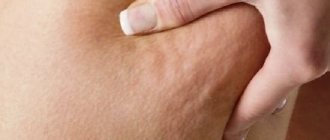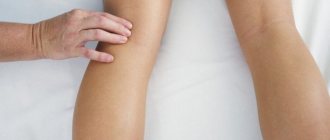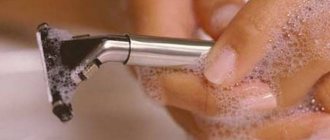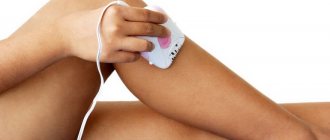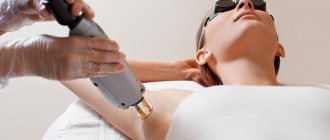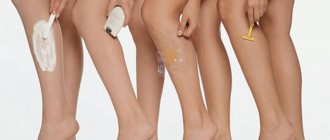Doctors have described a rare case of hair growing inside the human mouth
According to statistics, more than 75% of the Russian population suffers from hair problems. For most of us, they begin to turn gray and fall out over time, but there are people in the world who suffer from an overabundance of them. A large amount of hair on the head and face causes women especially a lot of inconvenience. In science, an excess amount of hair on the body is called hirsutism, and the cause of this phenomenon is considered to be an excess of male hormones in the body. As a rule, excess hair appears only on the skin covering our body, but in very rare cases, hair can even grow on the gums. One such case was recently reported by Italian researchers from the University of Campania “Luigi Vanvitelli”.
In some cases, hair may grow in the mouth as well.
The unusual medical case was reported in the scientific publication Science Alert. It happened in 2009, when a 19-year-old Italian woman approached the doctors at the above-mentioned university with a very unusual complaint. According to her, hair began to grow between her teeth, which interfered with her eating and generally caused discomfort. When examining the patient, doctors actually found eyelash-like hairs in her mouth and ultimately decided that they were dealing with so-called gum hirsutism.
Can hair grow on the gums?
After studying the medical literature, doctors found that since the 1960s, hair growth on the gums was detected in only five people. It is noteworthy that all of them were men. Since researchers do not know how many people in history have suffered from gum hirsutism, the Italian woman who came to them can be considered the first girl with such an anomaly. Doctors considered the cause of hair growth on the oral mucosa to be a hormonal imbalance, so they removed the hair surgically and prescribed hormonal medications to the patient.
Most likely, the prescribed treatment method really helped the girl, because she did not contact the institute staff for six whole years. However, when she stopped taking the prescribed pills, hair growth on her gums resumed and she ended up back in the hospital. Taking advantage of the opportunity, the doctors decided to examine her gums under a microscope and saw that the tissues of the girl’s oral mucosa were denser than usual and real hair shafts were actually breaking through them.
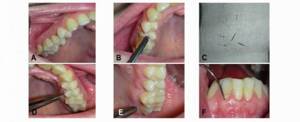
Growing hair found in patient's mouth
The researchers suggested that since the tissues of the oral mucosa are closely related to the tissues that form our skin during the embryonic period of development, the ability to grow hair in the oral cavity could be activated in a girl in the womb. However, scientists have not yet been able to test this theory, so they are unable to answer the question of which people are susceptible to hair growth on their gums.
If you are interested in science and technology news, subscribe to our channel in Yandex.Zen. There you will find materials that were not published on the site!
As for the Italian woman, whose identity is being kept secret, she was prescribed another course of medication. It is known that two years after admission, she returned to the hospital with complications. The further fate of the unusual patient is unknown, but I would like to know whether she managed to recover and whether the hair in her mouth affected the health of other organs.
Source: hi-news.ru
Practical tips for dealing with ingrown hairs

1. To reduce the risk of future ingrowth, treat your skin with a scrub before any hair removal or depilation. Thanks to exfoliation, you will release subcutaneous hairs, hair removal will take place without consequences.
2. If you know for sure that the skin in the bikini area is prone to ingrowth, do not visit the solarium or swimming pool after hair removal. But you are allowed to go to the sauna to steam the skin. The epidermis of the steam room should be treated with sugar or honey.
3. After getting rid of excess vegetation, use a spray to prevent ingrowth. It’s called “Skin lotion after hair removal/depilation.”
4. If you need to pluck out ingrown hairs, steam the skin. Treat with a scrub, lubricate with peroxide or chlorhexidine. Use tweezers and pull out according to hair growth.
Now you know for sure how to get rid of hated ingrown hairs after hair removal. The bikini area has delicate skin, so do not expose it to abrasive particles for a long time. Always steam the epidermis before exfoliating procedures.
Hair grows on the mucous membrane
The body of a person of any gender is more than 95% covered with hair. They grow everywhere: on the legs, arms, back, chest and face, and in women too. It’s just that men have coarser and thicker hair on their cheekbones, chin, chest and back. In representatives of the fairer sex, these zones are covered with vellus hairs, very thin, light and short. Only because of these qualities, facial hair on women is not as noticeable as on men. The only places where hair does not grow are the mucous membranes, palms, feet and eyeballs.
Causes of ingrown hairs
Hair removal in the bikini area has its own characteristics, which must be observed so that they do not grow in later. This happens due to the fact that some procedures change the structure of the hair, thinning it, while others change the direction of growth. The main reasons for the formation of ingrown hairs in the bikini area include:
- destructive effects on the bulb by various means or devices;
- hair removal in the bikini area against its growth;
- using a dull razor;
- tight-fitting clothing that blocks the access of oxygen to the skin;
- disrupted hormonal levels during pregnancy, menstruation or menopausal syndrome;
- improper hair removal, depilation and sugaring.
It can also be noted that dark-haired girls with tougher and denser hair are more susceptible to ingrown hairs in the bikini area. Dry skin that does not receive full nutrients is also more susceptible to this problem.
How our ancestors did
In the past, people had different attitudes towards body hair. In Ancient Egypt, all areas with dark long hair (including the head) were necessarily subjected to regular shaving. This was a definite cultural necessity in a very hot climate. Even noble aristocrats shaved their heads, after which their absolutely smooth skulls were covered with wigs. Women of the lower classes did not have access to such luxury, so they were content with their natural hair.
During the Middle Ages and the Renaissance, people of all classes did not touch the hair on their heads or bodies. Modern fashion dictates its own rules: a well-groomed woman’s body must be devoid of hair. In relation to men, this depends on the level of intelligence and “culture” of the gentleman.
Why is there body hair?
All these norms regarding the destruction of body hair are nothing more than a tribute to fashion. In fact, everything given to the human body by nature is in its place and performs a specific function. Hair in places such as the face and groin played the role of a gender identifier many centuries ago. A face with a beard indicated not only that it was male, but also that the male was sexually mature. The mane of lions has a similar meaning.
Hair in the groin and under the arms not only identify the adult, but also contribute to thermoregulation. Also, the vegetation in these areas accumulates the natural smell of sweat and pheromones, by which our distant ancestors sensitively detected a healthy, sexually active and genetically suitable individual.
Prevention
Many women wonder what to do to reduce the likelihood of ingrown hairs in the bikini area? To do this, you need to follow simple rules of prevention:
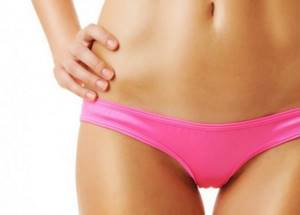
- regularly cleanse the skin with scrub or peeling;
- Before any type of hair removal in the bikini area, it is necessary to steam the skin;
- use softening and nourishing body creams;
- use only well-sharpened razor blades;
- Always disinfect your skin and tools before removing hair.
Based on numerous photos, one can judge that ingrown hairs in the bikini area are not only an unsightly phenomenon, but also often a provocateur of serious skin inflammations. It is necessary to remove them, but do this taking into account the sensitivity of the skin, without harming it, using gentle means and methods.
Harm from destroying body hair
A group of scientists from the University of Stirling in Scotland conducted an interesting study. They asked 63 women (age 18-32) to identify the most attractive sexual partner by the smell of men's sweat on their T-shirts. After analyzing the results of preferences, scientists found that all the ladies instinctively chose the men most suitable for their set of genes based on the smell of sweat.
Psychologist Craig Roberts concluded that the smell of sweat is a definite indicator of the health and genetic compatibility of partners. Interestingly, repeating the result after 3 months gave the same results. The ladies chose the same gentlemen. This mechanism has been honed by evolution for thousands of years so that people have the opportunity to select the ideal partner for the birth of healthy offspring. But it is on the hair that the smell of sweat is best preserved.
By shaving their body hair and covering up the smell of sweat with antiperspirants and perfumes, people deprive themselves of the opportunity to select good genetic material. In addition, constant shaving leads to microtraumas of the skin. This regularly activates and disorients the immune system, which is constantly forced to fight any external aggressor.
Do not forget that shaving occurs not only with the help of blades, but also with all kinds of foams, soaps and other chemicals. When cuts occur, all this enters the bloodstream, irritates the deeper layers of the dermis, and can cause suppuration and ingrown hair. Other methods of hair removal do not have the best effect on the skin. Particularly dangerous is the now fashionable laser hair removal, which provokes not only microtraumas, but also skin cancer.
Source: russian7.ru
After depilation
Depilation - getting rid of hair using tweezers, wax, special creams or an electric depilator. This procedure can often lead to ingrown hairs in the bikini area if performed by inexperienced professionals or at home without following proper hygiene rules or depilation steps. You should follow the basic recommendations when removing hair in the bikini area, this will help to significantly reduce the possibility of ingrown hair:
- disinfect instruments and skin;
- carry out all procedures only on steamed skin;
- Shave only with a well-sharpened blade;
- After removal, a nourishing cream should be applied to the skin.
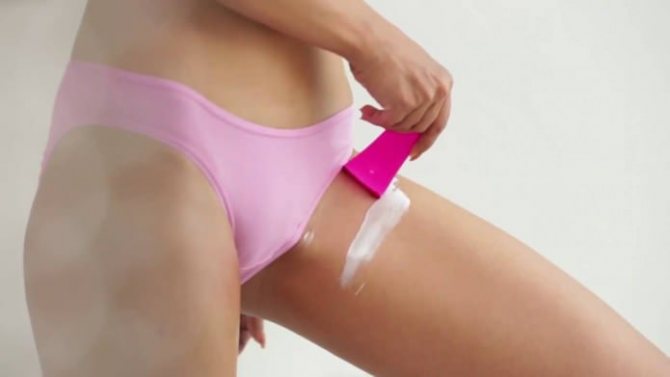
If you have a small number of ingrown hairs, you can use special scrubs, which must be applied only to steamed skin. If the problem has become more widespread, then you should resort to pharmaceutical products, supplemented with homemade masks.
Body hair: a matter of hygiene or aesthetics
Let's figure out whether we need hair under the arms and on the pubic area and whether it is worth removing it.
Advertising for razors and epilators strongly suggests that body hair is unhygienic and unsightly. Society supports this belief, but does not insist. Shaving certain places, everything in a row or nothing at all is everyone’s choice.
In the case of hair on open areas of the body - legs, arms, chest - hygiene is not taken into account, and only aesthetic views can be the reason. But armpit and pubic hair is another matter; here, the first thing that comes to mind is cleanliness and lack of odor.
Before we look at the real reasons that make people shave, it would be nice to understand why we have armpit and pubic hair in the first place, and whether we are losing something important by shaving it.
Why do we need pubic and armpit hair?
There are two theories to explain why we have fairly dense vegetation in these areas.
- To reduce friction. In the case of the armpits - when walking, running, working with your hands, and on the pubic area - during sex. However, the absence of hair does not seem to affect the occurrence of abrasions in these areas.
- To attract the opposite sex. Apocrine glands are located in the armpits and pubic area, the task of which is to secrete secretions from proteins, fats and fatty acids. Bacteria feed on this wealth, which provides the specific aroma On the nose: genetic and evolutionary aspects of smell. Scientists theorize that the secretion permeates the hair, which enhances the smell and, in theory, attracts mates. However, the rudimentary vomeronasal organ Chapter 19Human Pheromones (how animals detect pheromones) and dysfunction of the apocrine glands in the pubis suggest that this feature is a relic and is not so necessary for finding a sexual partner.
Why did people start shaving their body hair?
Shaving your legs, armpits and pubic area is not such a modern invention Female Pubic Hair Removal. Shaving was practiced in the ancient cultures of Egypt and Greece, in ancient Rome and even during the Middle Ages - to get rid of pubic lice.
In the 20th century, marketing is blamed for the spread of fashion for a smooth body. In 1915, the first Gillette advertisement was released with the message that it was feminine and hygienic. And in 1924, the first bikini swimsuits appeared, and women began to shave their hair below their stomachs.
The fashion for shaved skin not only on the face reached men a little later. Male Body Depilation: Prevalence and Associated Features of Body Hair Removal. However, today many Western men prefer to get rid of pubic and armpit hair.
The production of shaving and hair removal products, as well as the development of various hair removal methods, is a huge industry in which a lot of money is circulating.
A hairless body is promoted not only in advertising, but also in fashion magazines, films and TV series. They also talk about the spread of pornography, in which pubic hair is very rarely present. Young people absorb this experience and begin to perceive the absence of hair as one of the criteria of sexuality.
But despite the image of the ideal body perpetuated in popular culture as having no hair, only a small percentage of people believe they shave because of social expectations.
Treatment options
There are various ways to remove ingrown hairs in the bikini area. It should be chosen based on their number and degree of damage. It should be remembered that the skin in the bikini area is more sensitive than on the legs, so you need to choose methods that do not injure it, and be sure to disinfect the skin and instruments.
Scrubs
Scrubbing should not be done frequently so as not to disrupt the integrity of the skin and not irritate it. The optimal frequency is once a week. The skin must first be steamed. This is done in two ways - take a bath or make lotions. The scrubs themselves can be purchased at cosmetic departments or made yourself. Ground coffee, white or cane sugar, or sea salt can act as exfoliating particles. Here are some recipes:
- mix a spoonful of sugar with honey (it relieves inflammation well), add a spoonful of almond oil and 3 drops of orange essential oil;
- take sea salt and coconut oil in equal proportions, adding a teaspoon of honey;
- Brew coffee, drain liquid. Use the remaining liquid as a scrub, squeezing the juice of 1/3 lemon into it and pouring a teaspoon of castor oil.
After using these products, you need to anoint the treated area with a soothing cream. Their use is prohibited in the presence of inflammatory processes in the area of ingrown hairs.

Peelings
The difference between peelings and scrubs is that the latter affect the skin only superficially, removing dead particles and removing the top layer. Peels are a gentler type of cleansing, acting more deeply. To get rid of ingrown hairs in the bikini area, it is better to give preference to peelings, since they cause less damage and can be used more often - several times a week, which makes them a delicate, but more effective and faster method. Peeling compositions can be purchased at cosmetic stores or prepared at home:
- crush 2 paracetamol tablets, diluting them with a small amount of water, apply with light massage movements for 2 minutes, then rinse with warm water;
- dilute the sugar with peach oil, this should be done in the following ratio: for a large spoonful of sugar, ½ teaspoon of oil. You need to achieve a consistency in which the sugar grains do not completely dissolve, but are not too rough.

Creams and ointments
They are used not only to remove ingrown hairs in the bikini area, but also to prevent them. Many manufacturers focus on softening the skin, so any product is suitable for everyday use.

They are applied to the bikini area and rubbed in circular movements until completely absorbed. It would be a good idea to check the instructions before use to avoid side effects. The most popular among them are the following:
- Cream "Aravia";
- Gel "Caramel";
- Lotion "Depiflax";
- Cream "Foli End";
- Skin doctors lotion.
Steaming
If there is a small amount of ingrown hair in the bikini area, steaming can be done. It is done like this: warm water is poured into a container, gauze or a terry towel folded several times is placed in it, and applied for 5 minutes. If necessary, the procedure is repeated several times. The skin becomes softer and more pliable, and the hair easily breaks through.
If instead of ordinary water you use decoctions based on medicinal herbs, then steaming can also be carried out as a treatment during inflammatory processes in the hair follicles. The hairs that have come out can then be removed in the usual way. As medicinal plants, you can take chamomile, calendula or nettle.
Removal with a needle and tweezers
This is the least preferred method of all for removing ingrown hairs in the bikini area. Exposure to a sharp object can cause bumps to appear at the site of the ingrown hair, and after healing there is a high likelihood that spots will remain. If, during the elimination of vegetation, untreated instruments are used, then there is a risk of introducing microbes under the skin.
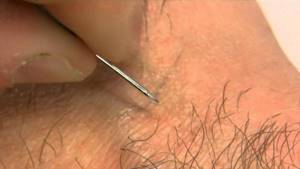
For those who still decide to resort to hair removal with tweezers, this should be done as follows:
- Disinfect the bikini area and instruments.
- Steam the skin.
- Use a needle to pick up the part of the hair protruding above the skin.
- Remove hair with tweezers with a sharp movement in the direction of growth.
- Apply a soothing cream to the bikini area.
Pharmacy products
Pharmaceutical products include salicylic acid and aspirin. Tablets of any of them are kneaded and diluted with a small amount of water and applied to the bikini area. Leave for 5-10 minutes and wash off with a soft cloth and water.
You can treat the affected area with a solution of Chlorhexidine, it softens the skin and at the same time effectively relieves inflammation.
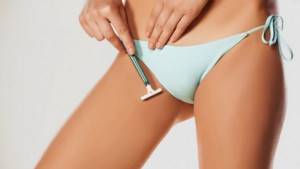
A good result can also be achieved by applying a composition of hydrogen peroxide and badyagi. The solution and algae extract are taken in equal proportions and applied for 7 minutes. Please note that the result will only be visible after a couple of days.
What other reasons are there?
Research in the UK, New Zealand, Australia and the USA shows that 65–89% of women and 65–82% of men shave their pubic hair. A survey of more than 4,000 men Prevalence and Motivation: Pubic Hair Grooming Among Men in the United States and 3,000 women Pubic Hair Grooming Prevalence and Motivation Among Women in the United States in the United States found that the main reasons for shaving are sex and hygiene.
Most often, people of both sexes shave before sex, especially before oral.
In addition, 61% of men and 59% of women do it for hygiene, and 44 and 46% perceive it as part of their routine personal care. Interestingly, some primitive communities that have no access to either fashion magazines or porn get rid of groin hair for the same reasons.
Pubic's study Hair Removal Practices in Cross-Cultural Perspective found 26 such pre-industrial societies. In 22 of them, only women shave their pubic area; in 11, men do it too. Scientists have found information about the reasons for the tradition in some communities: in two of them it was done for attractiveness, in seven - for hygiene.
Folk remedies
You can also remove hair in the pubic area using traditional methods. Here are the most popular ones:
- Iodine + ammonia. You need 5 ml of ammonia and 5 drops of honey, pour 40 ml of alcohol, add 5 ml of castor oil. Mix everything thoroughly. The resulting solution can be used immediately. They need to treat the area with excess vegetation 2-3 times a day. After about a week, the hairs will fall out. If after some time they appear again, you will need to use the prepared product again.
- Hydrogen peroxide. If you use it yourself, you can bleach your hair. Or you can prepare a special product that will slow down their growth and make them thin. You need to mix 1 tbsp. peroxide with 1 tbsp. women's shaving foam, add 5 ml of ammonia. Treat excess vegetation with the resulting mixture and leave for 15 minutes. After this, rinse with chamomile decoction at a comfortable temperature.
- Pine nuts. Their shells must be crushed into powder, add a small amount of water - you should get a creamy consistency. Rub the resulting mixture into the skin daily. After a few weeks, the hair should fall off.
But you need to use folk remedies very carefully. Some components may cause severe allergies.



